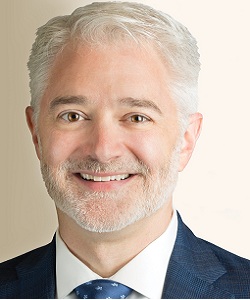The need to quarantine has been an important catalyst for telehealth and is reshaping how community hospitals deliver care. Once sparingly used in rural areas, telehealth is a primary means to maintain healthcare services at a time when it’s critical to reduce the spread of COVID-19.
In recent weeks, the spreading virus has spurred a growing number of rural and community hospitals to launch or expand telehealth services.
The numbers tell the story. In March, telehealth visits in the U.S. surged 50 percent as the outbreak spread out across the country, according to research from consultancy Frost and Sullivan. Another analyst firm predicts virtual care interactions are expected to surpass one billion by year-end.
Coronavirus-fueled demand for telehealth services in rural America represents a significant departure in how healthcare services are accessed in these areas. While telehealth technology has been around for years, it has been infrequently used in rural hospitals and clinics. That’s partially due to a lack of patients’ interest or ability to swap face-to-face office visits with an online chat or telephone call.
Rural telehealth usage also has been hindered by some providers who were previously reluctant to adopt the technology for various reasons, opting instead to perform routine patient medical exams or follow-up visits for chronic conditions at their offices.
Additionally, telehealth’s growth in rural areas has been stunted by concerns that the expense of equipping smaller healthcare facilities with this technology would further strain already-stretched budgets, among other factors. Meanwhile, telehealth in small rural communities has been traditionally limited to a small number of patients under the care of neurologists, cardiologists, and other healthcare specialists, who are often located in distant and more urban cities and towns.
New developments driving telehealth’s growth
But the country’s response to control the highly transmissible virus has resulted in greater acceptance of rural telehealth with each passing day. Telehealth was given a big boost with the Centers for Disease Control and Prevention recently prompting telehealth for people experiencing mild symptoms of the disease, in order to reduce spreading the virus to healthcare workers and others.
Telehealth also has shifted into high gear due to loosening requirements for this technology. Some examples include the U.S. Department of Health and Human Services waiving licensing regulations to permit out-of-state physicians to use telehealth to treat patients, along with relaxing HIPPA-compliance penalties allowing providers to conduct patient exams on virtual chat platforms such as Google Meet and FaceTime. Government-subsidized and private health insurance plans also have increased reimbursements and expanded coverage for additional healthcare services via telemedicine. It remains to be seen whether these changes will endure long term.
The idea that the time has come for telemedicine to play a greater role in healthcare has received wide support from healthcare, business and government leaders. In a recent issue of Time magazine, Former U.S. Senator and ex-heart surgeon Bill Frist said the country needs “more reasonable financial reimbursement for telehealth regardless of modality or location, and permanent cross-state physician licensing” to truly expand telehealth services.
Another key development was technology giants Google and Apple recently announcing plans to roll out virtual care search. This would enable patients to use the companies’ location technology to find nearby healthcare facilities offering telemedicine and other services.
CHC hospitals making telehealth more accessible, convenient and efficient
Community Hospital Corporation, which owns, manages and consults with rural and community hospitals, is among those healthcare organizations driving telehealth usage to help transform the rural healthcare landscape. The Plano-Texas-based company has been working diligently with its network hospital administrators, medical staff and others to make telehealth more accessible, convenient and efficient for the communities they serve.
For instance, Geary Community Hospital in Junction City, KS; Great Plains Health in North Platte, Neb.; and Yoakum Community Hospital in Yoakum, Texas, are just a few examples of hospitals CHC works with that are using telemedicine in response to the outbreak and improving healthcare access overall for rural patients.
At Geary Community Hospital, the hospital has a physician assigned as a critical-care intensivist – a newly established position. The doctor will be on-site six to 12 days per month and on-call via telemedicine on non-site days. The hospital is also working on launching E-visits for emergency department and urgent care and telehealth programs for neurology and cardiology support.
Great Plains Health, a health system serving a 24-county region in North Dakota, southern South Dakota, and northern Kansas, made improvements to its telehealth program designed for remote monitoring of older patients with chronic health conditions. The program improvements have effectively reduced hospital readmissions and earned high patient satisfaction scores.
At Yoakum Community Hospital, the hospital has found that telehealth services have become a valuable tool in reducing the incidence of coronavirus-related infection among the facility’s staff and patients, as well as a helpful way to treat patients with other health concerns.
In April, the critical access hospital’s family practice clinic treated more than 120 patients via online and telephone exams.
The Yoakum facility had initially rolled out its telemedicine service for psychiatry and primary-care services two years ago, but due to lack of demand, the primary care service was discontinued last year. In 2020, the hospital revived telehealth to ensure the safety of its primary-care patients and staff and to avoid any possible disruptions in healthcare services for the community.
The fact that the hospital had a headstart on its telehealth services gave the IT staff thorough knowledge of how to use the technology and to assist with the patient on-boarding process. This allowed the staff to work more efficiently with booking and conducting telehealth appointments.
Rural telehealth still faces challenges
While the benefits of rural telehealth are many, some challenges still lie ahead in successfully allowing this 21st-century technology to reach its full potential.
Those challenges include the lack of Internet, low-bandwidth Internet and reduced land line and cell phone access in many areas. These services are needed to connect clinicians with their patients. According to one report, nearly 45 million Americans are unable to virtually connect with healthcare providers because they do not have Internet access. That may change with a proposed congressional bill that seeks $2 billion to expand online connectivity at public and nonprofit healthcare facilities.
Another challenge is persuading older patients to use telehealth for routine exams and to manage chronic health issues. Telehealth providers have found that some elderly patients are unable to communicate with doctors via telehealth, or they are uncomfortable with the idea of replacing in-person visits with video chats and phone calls. But, hopefully, these concerns will become less of a problem as more healthcare providers inform and educate their patients on the benefits of telemedicine.
The growing popularity of telehealth is ushering in a new era in rural healthcare. It has not only emerged as a critical tool to use during the current pandemic, but it is also a transformative technology that is destined to dramatically improve the quality of and access to rural healthcare in the years ahead.




















